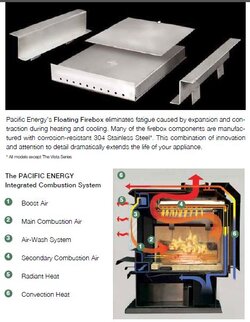My bad. I just conferred with my next-door neighbor who told me he loads his Spectrum E/W from time to time. He said that the splits are shorter, more like 14-15" for that loading. So I went and checked the EPA lab report. You are right. The LE firebox dimension has not changed. It's 15.125" wide according to the report.Hello begreen. Oh well now I'm confused because the firebox I have is definitely not 18'' wide. It is a bit less then 16''. I have the Super LE, not the Super Classic. Not sure if this makes a difference?
Thanks for your clear explanations. It seems a key damper would really help.
In the meantime I think I have found a solution to prevent the nuclear second combustion from happening during reloads. First I rake some of the coals to the front of the firebox as suggested here and elsewhere. I then squeeze small/medium size logs as tight as possible on the first "level" of the firebox. Then I take ashes from my ash bucket and sprinkle some between each logs to restrict air flow. I stack a second layer of larger logs on top of that and again I add some ashes between the logs. So far it has been working extremely well, I'm impressed.
That's an interesting workaround. I don't think I have heard of this before, but I can see how that would help. Very clever.



